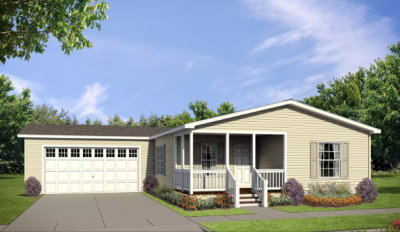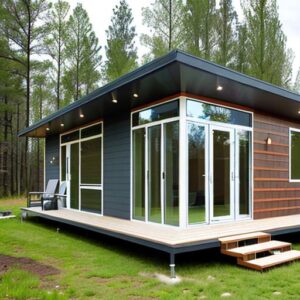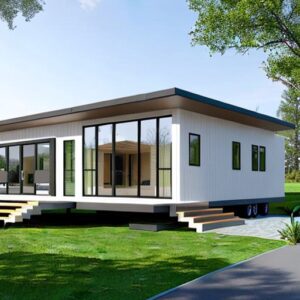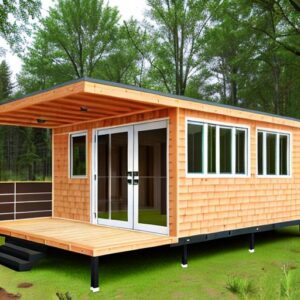Every manufactured home goes through a series of inspections throughout various phases of construction to ensure proper construction and good quality. Standard manufactured homes can be shifted from one location to another because they are built on a permanent chassis or wheels that make it movable.

The Difference between Manufactured and Modular Homes
These terms can be confusing as they are often used interchangeably without knowing the kind of structure being referred to. The major similarity between the two is that they are constructed in a climate-controlled building and can be customized from the factory to suit the needs of the user. However, they are quite different based on construction setup, and mode of installation. A manufactured home is a prefabricated structure permanently built on a chassis that can be used as permanent homes or for temporary accommodation. They may be required to move occasionally for legal reasons or individual preferences. That is the reason they have strong trailer frames, tow-hitches, wheels, and axles underneath the cosmetic work that hides the base.
A modular home is built in sections or modules that are later assembled and installed on a permanent foundation at the construction site. They are treated similar to stick-built homes because they follow the same local building codes, and appreciate over time. Because modular and regular homes share many characteristics, it is sometimes difficult to tell the difference between the two just by looking at them.
Financing Options for a Manufactured Home
Financing a home can be challenging especially when it comes to manufactured homes. You will not get as many options as you would if you had a modular home. However, you can still keep the costs low using government-backed loan programs and other sources. Several manufactured homes are often financed with a retail installment contract from the retailer selling the home. Other lenders may only grant you a conventional mortgage on the condition that you build your manufactured home on a permanent foundation. Since this is often difficult to do based on legal reasons, eligible homeowners can apply for a VA loan, which is a type of mortgage that comes with a guarantee from the Department of Veteran Affairs and is available to veterans and military members or their spouses.
Benefits of a Manufactured Home
- Cost-Effective Building Design
A manufactured home can save you money because you can customize it to fit your budget. Purchasing new construction in a neighborhood usually costs more because you are working with the available options presented to you by the builder. With a manufactured home, you can get custom builds for only a fraction of the cost.
- Placement
It is important to find a suitable location before buying a manufactured home. Manufactured home communities offer a simple way for you to buy or lease some space with nearby neighbors to take advantage of the shared amenities. For those who prefer privacy, you can always move your home to open land where you can enjoy the peace and calmness of mother nature.
- Safety
Manufactured homes are built to meet several standards compared to site-built homes. Not only are these homes built up to HUD standards for living, but are also designed to meet the additional safety standards for transport. Since they can be shifted from one location to another, the central components are reinforced to ensure the frame is not damaged during movement.
- Energy Efficiency and Sustainability
Manufactured homes reduce the living expenses for people who need it the most since homeownership costs deal with resultant utilities. Manufactured homes constructed in recent times are more energy-efficient than they used to and have made impressive headway in creating greener living options. Not only are they built with sustainable construction materials but also create a smaller carbon footprint.
A manufactured home is a good investment that serves people in the lower-income bracket. The core demographic for such housing include retirees, singles, and young couples. Before purchasing a manufactured home, it is important to have more information about the rules and regulations of such housing in your area and the place you intend to locate it.



